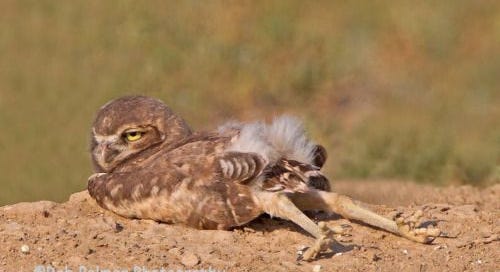46: Burrowing Owl
I write to you from Arapahoe, Ute, and Cheyenne land. I am interested in learning about the different animals that live in the place where I was born. I want to mention that biological classification as taught by western science has its roots in racism, sexism, and transphobia – here’s a good explainer about why.
The burrowing owl (Athene cunicularia) has long legs, for an owl.
They also are active during the day, unlike many owls, and they also live in burrows – such as in abandoned parts of a prairie dog colony – again unlike many owls. They lay their eggs inside of their burrows after decorating them with found objects including animal dung. Inside their burrows, they train their fluffy chicks to hunt insects, which are their main food source. When they feel threatened, especially when young, they will hide inside of their burrows and make a noise that mimics a rattlesnake.
Burrowing owls live throughout North and South America, and are one of the smallest animal species. Here in Colorado, you can see them in black-tailed prairie dog colonies from March through September, their nesting season. They come to Colorado during the warmer months to lay their eggs and raise their young, then migrate south for the winter. If you are looking for them in prairie dog colonies, look for a mound that has a lot of white around it – that would be the bird’s “decoration”. They are often seen perching on yucca plants.



